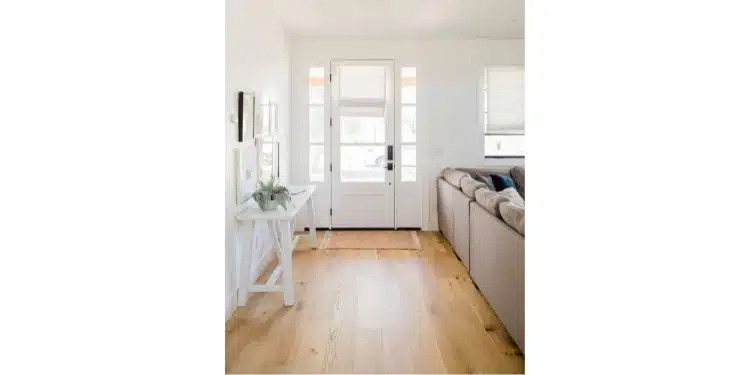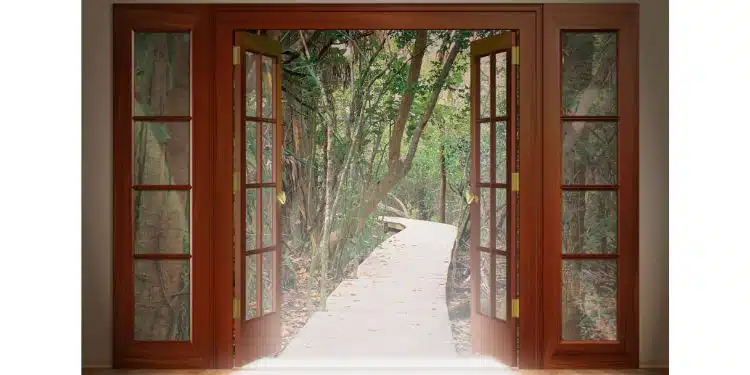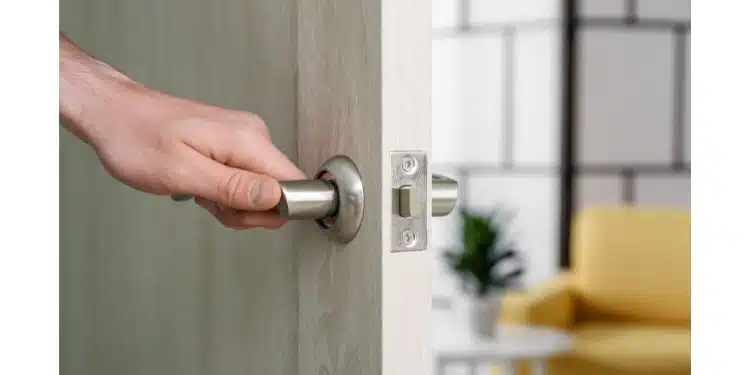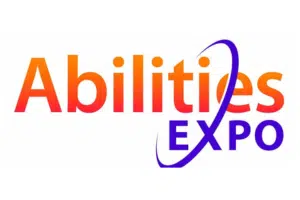by Ellen Blake
What Is Visitability?
“What is visitability?” is a good question, as visitability is a term with which many are not yet familiar. Most people refer to this housing trend as “accessibility”, but that word seems to have a negative connotation for some, conjuring up visions of older adults with age-related disabilities. The term, “visitability” is becoming the preferred, and actually a kinder and more welcoming, term for homes with accommodations.
Visitability refers to a design concept that focuses on making residential spaces, particularly homes, more accessible and welcoming to people with mobility challenges. Visitability aims to create an inclusive environment where individuals with disabilities or physical limitations can visit and interact with ease.
Visitability refers to single-family or owner-occupied housing designed in such a way that it can be lived in OR visited by people who have difficulty with steps.
What Makes a House Visitable?
Key features of a visitable home typically include:
Zero-step entrance: The main entrance to the home should have a flat, no-step entryway, allowing easy access for wheelchair users and those with mobility aids.
Wide doorways and hallways: The home should have wider doorways and hallways (minimum 32 inches of clear passage space) to accommodate wheelchairs and other mobility devices.
Accessible bathroom on the main floor: A visitable home typically has an accessible bathroom on the main level to avoid the need to use stairs.
Think about it – when someone builds a new home, it’s not just for them. That home will be around for many years and at some point likely sold to another family. These simple accommodations hurt no one but help many. They also do not add significant cost to the price.
Is Visitability the Same as Accessibility?
No, visitability is not the same as accessibility, but they are related concepts. Accessibility typically refers to the design and provision of environments, products, services, or information that can be used by people of all abilities, including those with disabilities. It aims to remove barriers and enable equitable participation for everyone, regardless of their physical, sensory, or cognitive abilities. In contrast, visitability is a more specific concept related to housing design. It focuses on making private homes easier to navigate for people with mobility impairments, particularly those who use wheelchairs or have difficulty with stairs. While visitability addresses some aspects of accessibility in the context of private homes, it is more limited in scope compared to the broader concept of accessibility, which encompasses all aspects of the built environment, public spaces, services, and communication.

Who Benefits From Visitability? Everyone!
- The UPS driver who delivers your heavy new cabinets who can more easily leave them on your front porch instead of at the curb
- The college kid moving furniture and boxes out of the house
- The grandma who wants to visit the children but knows she won’t be able to use the bathroom when she visits
- The young mother with a baby stroller, who won’t need to bump it up and down steps when visiting.
- The high school athlete who breaks a leg and needs to use crutches for 3 months
- Your neighbor with Multiple Sclerosis who did not have a problem a few years ago with steps, but became progressively worse.
Interesting Facts Related to People With Disabilities
The Pew Research Organization compiled some interesting facts about people with disabilities.
Older Americans are significantly more likely than younger adults to have a disability. According to estimates from the Census Bureau’s 2021 American Community Survey (ACS), about 46% of Americans ages 75 and older and 24% of those ages 65 to 74 report having a disability. In contrast, approximately 12% of adults ages 35 to 64 and 8% of adults under 35 report living with a disability.
Americans in certain racial and ethnic groups are more likely to have a disability. According to the 2021 ACS estimates, American Indians and Alaska Natives (18%) are more likely than Americans of other racial and ethnic backgrounds to report having a disability. Asian and Hispanic Americans are the least likely to say they have a disability (8% and 10%, respectively). White and Black Americans who report living with a disability fall in the middle (14% each).
Difficulties with walking, independent living, or cognition are the most common types of disabilities in the U.S. Adults ages 75 and older and those ages 65 to 74 are the most likely to report having serious ambulatory difficulties such as struggling with walking or climbing stairs. (30% and 15%, respectively) according to the ACS estimates
Similar shares of Americans with and without disabilities say they have high-speed home internet. Even so, disabled Americans are less likely than those without a disability to report using the Internet daily (75% vs. 87%). And Americans with disabilities are three times as likely as those without a disability to say they never go online (15% vs. 5%).
Why Add Basic Accommodations When Designing Your Home?
A better way to phrase the question, “Why add basic accommodations when designing your home?” is “Why not add basic accommodations when designing your home?”. There will come a time when you and/or your guests feel very grateful you thought ahead.
While visitability primarily focuses on making homes more accessible to visitors with mobility challenges, it also sparks discussions about incorporating such design principles into all new residential construction, ensuring that more homes are inclusive and accommodating to diverse populations. This promotes the integration and social inclusion of people with disabilities, improving their overall quality of life and fostering a more inclusive society.

FAQs About Visitability
Below are some commonly asked questions about visibility and their corresponding answers.
Who benefits from visitable homes?
Visitability benefits individuals with mobility challenges, including wheelchair users, people with mobility aids, and others with physical disabilities. It also makes homes more convenient for older adults or anyone facing temporary mobility issues.
Is visitability the same as universal design?
Visitability and universal design share similar goals of creating inclusive environments, but they are not the same concept. Visitability specifically focuses on making homes accessible to visitors, while universal design aims to create products and spaces that are usable by all people, regardless of their age, size, ability, or disability.
How does visitability promote social inclusion?
By making homes more accessible, visitability promotes social inclusion by enabling individuals with disabilities to visit friends and family without encountering barriers. It fosters a more inclusive society where everyone can participate in social gatherings and events.
Are there guidelines or standards for visitable home design?
Visitability is a concept without strict regulations. However, some organizations and localities have guidelines or incentives for visitable home construction. Additionally, some building codes or accessibility standards may include aspects of visitability.
Can existing homes be made visitable?
Yes, you can retrofit existing homes to become more visitable. For example, ramps can be added to the entrance, doorways widened, and grab bars installed in bathrooms. However, it may be more cost-effective to incorporate visitability principles during the initial construction or major renovations.
How can builders and architects implement visitability in new homes?
Builders and architects can incorporate visitability features during the design and construction phase. This may involve ensuring a zero-step entrance, wider hallways and doorways, and at least one accessible bathroom on the main floor.
Are there any financial benefits to visitable home design?
Visitability can increase the long-term value of a home and attract a wider range of potential buyers or renters. Additionally, some regions may offer incentives or grants for building visitable homes.
How many people live with disabilities in the U.S.?
According to U.S. Census Bureau data from 2021, there are about 42.5 million Americans overall living with disabilities. This group makes up 13% of the civilian noninstitutionalized population and includes people with hearing, vision, cognitive, walking, self-care, or independent living difficulties.
Accessibility Resources
Below are some helpful and unique resources related to accessibility.
Google Maps Accessible Places
Enables you to find wheelchair-accessible locations using Google Maps.
ADA National Network
Comprehensive civil rights act for people with disabilities. This organization empowers people with disabilities by banning discrimination based on their disability and by making it possible for them to participate more inclusively in their communities.
Disability Etiquette
A great resource from the United Spinal Association for businesses, schools, organizations, staff training, and disability awareness programs. Tips to help relieve awkwardness you may feel when interacting with, or when you meet, a person who has a disability.
Barrier-Free Cruising
Tips and resources for disabled cruise travelers
CruiseCritic.com
Info on cruising with a disability
Independent Traveler
The travel industry is waking up to disabled travelers’ special needs by providing more services and greater accommodation. A great resource for travel tips.
World on Wheelz
Agency specializing in accessible getaways for wheelchair travelers, slow walkers, and seniors with special needs
Check back as we update our list regularly.
Invisible Disability Association
The Invisible Disabilities® Association is about believing. We believe you! The frequently invisible nature of illness and pain may lead to disbelief about that illness or pain by those surrounding the person who lives daily with invisible disabilities.
Open Doors Organization
Open Doors is a 501(c)(3) non-profit organization based in Chicago, Illinois, that strives to create a society in which all persons with disabilities have the same consumer opportunities as everyone else. They teach businesses how to succeed in the disability market, while simultaneously empowering the disability community.
Sexuality Following Spinal Cord Injury
Despite myths, people with spinal cord injury (SCI) can still enjoy sexual pleasure and connection. This booklet, written by Mitchell S. Tepper, Ph.D., MPH, provides accurate information about sexuality and SCI.











